June 24, 2009: Barry Cauchon
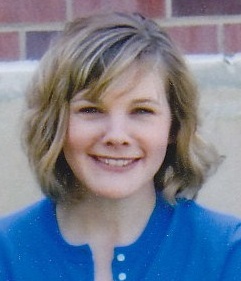
Nikaela Zimmerman, Assistant Registrar/Conservation Technician for the Kansas State Historical Society
Earlier this month, John Elliott, my friend and research partner on Fort McNair and the Washington Arsenal Penitentiary, sent me a photo of an artifact in the collection of the Kansas State Historical Society (KSHS). It is a portion of the gallows crossbeam that was used to hang the four Lincoln conspirators. I contacted Nikaela Zimmerman, Assistant Registrar / Conservation Technician at the KSHS and she graciously consented to an interview about the crossbeam, the exhibition it is currently displayed in and the Kansas State Historical Society’s role in preserving Kansas history. Note: The photos of the Gallows Crossbeam and the Bloodstained Playbill from Ford’s Theatre are courtesy of the Kansas State Historical Society.
——————————————————
B. Hi Nikaela. It’s a pleasure to speak with you. The first thing I’d like to ask you concerns the Kansas State Historical Society. Can you tell us a little bit about the society and the role it plays in Kansas?
N. The Kansas State Historical Society as a whole was founded in 1875. So we’ve been around almost as long as Kansas has been a state. Kansas became a state in 1861. We were founded by a group of Kansas editors and publishers. And we didn’t become a trustee of the state so we weren’t officially the state historical agency until 1879. We are the official repository and guardian of materials related to the history of the state of Kansas.
B. Is the collection housed at the Kansas Museum of History?
N. It is! When the society first started out, it wasn’t broken down into divisions. It was all one umbrella. Now we’re broken into several different divisions. Within the Kansas State Historical Society the Kansas Museum of History is one of those divisions. The Library and Archives is another division. And we also have an Education division, a Cultural Resources division which includes Archaeology. And then we have sixteen historic sites throughout the state that are under another division. So we’re all part of one whole. We all serve the same purpose of preserving Kansas history. So we all do slightly different things.
B. Not knowing exactly how the system works, can you tell me how many museums are under the umbrella of the Kansas State Historical Society?
N. For the state of Kansas, we’re it. We are the official history museum. Basically, every county in the state has its own small historical society and they’re independent of us. Now, throughout the state, our historic sites are part of us and we manage them. We have a person there who works for the state who manages that site and the artifacts that are kept at that site. But for the most part, it’s us.
B. The reason I originally came across your website was because you have an exhibition on right now called Lincoln in Kansas which has a number of artifacts that relate to the blog that I write and am involved with. Would you tell us a little bit about that exhibit?
N. Sure. Since 2009 is the bi-centennial of Lincoln’s birth there are many museums in the United States that are doing exhibits related to him. It might sound a little odd that Kansas would have a Lincoln exhibit but Lincoln did visit Kansas in 1859. So the exhibit focuses on that and the other connections that Lincoln had with our state. At the time of his visit to Kansas, the territory was in the midst of a bloody battle to be entered into the Union as a free state. Lincoln was a rising political star. In the previous year he had just done the Lincoln-Douglas debates. The visit to Kansas was beneficial to both the territory and to Lincoln. People in Kansas thought that if they had Lincoln on the side of the Free-Staters it would increase their chances of getting into the Union as a slave-free state. And it benefited Lincoln because he was testing the political waters leading up to the 1860 Presidential elections. And it was a great opportunity for him to build some contacts in this part of the country and in a new area; not only for his campaign but for his law career. So while he was here he visited several cities in northeast Kansas like Atchison, Leavenworth, Troy and Elwood. In each city he gave a speech. He used that opportunity to practice and perfect a speech that he would deliver later at Cooper Union in New York. And many historians as you probably know cite that speech as one that turned around his presidential campaign. So that’s a large part of the exhibit, focusing on his visit to Kansas and what he did while he was here.
B. What artifacts are in the exhibit that relate to Lincoln’s visit?
N. There aren’t too many left. The sites where Lincoln spoke…most of them are gone now, so only pictures of them remain.
There’s a plaque which marks the building where Lincoln spoke in Leavenworth. It was the Planters House Hotel and there was a plaque on the building before it was razed. So we’ve got that.
Lincoln was possibly distantly related as a cousin to a man in Kansas named Mark Delahay who became a judge later on. So there are a few artifacts relating to the Delahay’s.
There is a pot (laughing)…this is crazy! There is a pot lid that may have belonged to Lincoln’s mother and then she gave it to another family member and it was passed down through the line and ended up in Kansas. So these are a collection of strange, random things in that section of the exhibit just because it’s a difficult period to collect from since the territorial period was 1) so long ago and 2) things that they had were so expendable.
B. In all the museums I’ve worked in and visited in my career, it’s those kinds of artifacts that I love most; the unique ones with the strange stories attached to them.
However, two of the artifacts that we spoke about earlier this week are not related to Lincoln’s visit to Kansas but rather to his assassination and the conspirators involved. And it was through connections in Kansas that these artifacts came to be in the KSHS’ historical collection. Can you tell us about these artifacts and how they ended up in Kansas?
N. The two artifacts you are talking about are; one is a gallows crossbeam and the other is a fragment of a playbill.
The gallows crossbeam came from the gallows on which the Lincoln conspirators were hanged in 1865. Again, it seems a little strange that such a piece would end up in the state of Kansas. What possible connection could there be?

A section of the gallows crossbeam taken from the scaffold used to hang the condemned Lincoln conspirators on July 7, 1865.
We’ve had the piece of the gallows in our collection since 1885. It’s one of our older artifacts. At the time it was collected our secretary was named Franklin G. Adams and he strongly believed that history should be collected while people who experienced it were still alive. So he was going out trying to find things, especially related to the Civil War, that could illustrate what happened. And he could still talk to the people that experienced it and have a good oral history, a good record of what those people experienced.
He found out from a colleague in Washington D.C. that the gallows used to hang the Lincoln conspirators was being stored in pieces at the Washington Barracks. And so he wasted no time in contacted a man named Lieutenant Sebree Smith who was at the Washington Quartermaster’s Office and asked him if might be willing to send a piece of the gallows to the historical society for the collections. And as luck would have it Lieutenant Smith had been stationed at Fort Leavenworth, Kansas for a period of time. He considered himself a Kansan and he happily agreed to send as much of the crossbeam as the historical society wanted. So at the time he shipped out the piece of the gallows that we have in our collection he also acquired a sworn statement from a man named George Tatsbaugh, who stated that he worked as a storekeeper at the Washington Arsenal from 1865 to 1881 and he witnessed the “top beam of the ‘Surratt Scaffold’ [as it’s sometimes called] was buried in 1865 under a large pile of timbers to secure it from curiosity seekers”. He went on to say that he did recognize the piece being sent to Kansas as the top beam from the gallows. And we’ve had it in our collection ever since.
B. One thing that I noticed when I read your brief on it was that the piece was made out of pine. And that surprised me. I didn’t know that about the scaffold. And my next question dealt with what part of the crossbeam did this section come from.
N. There was a little correspondence between Adams and Smith about which section of the crossbeam it was. Because when Smith sent the original letter to Adams saying “Yes, we have this” he indicated that the crossbeam had two mortise points in the middle. And Adams had looked at the pictures that Alexander Gardner had taken. He had also seen the drawings from Harper’s Weekly and he could not understand because in those depictions there was only one support beam in the center so why would there be two mortise holes? So he sent back a letter and Sebree Smith cleared it up by saying “Whoops, I was wrong. Looking at it again there was only one”! And if you look at the piece we have there’s one mortise.
B. But at this point you do not know if you have the center piece or one of the ends?
N. Right. It came from somewhere along the top crossbeam.
B. It can only be one of three locations by the looks of it (laughing).
That’s exciting. It’s a very interesting piece.
N. We are very excited to have it. It’s pretty cool.
B. It’s on display right now in the Lincoln in Kansas exhibit. Is this, and the other artifact that we are going to talk about in a minute, normally on display?
N. No. Unfortunately, they are not normally on display. They are kind of special things that we pull out for exhibits like this. And just for safekeeping they are usually kept in storage. At all times, 24/7, you can go onto our website and see images of them and read the provenance. Both of them can be found in the “Cool Things” section of our website.
B. If my readers have not been to your website, it’s definitely worth a visit. Go to www.kshs.org. To find Cool Things, click Collections and you will find the link there.
The second artifact is related directly to the assassination and it came from Ford’s Theatre. It’s a small corner of a playbill from the performance of Our American Cousin on April 14, 1865. It looks like a small tear or cut corner of the playbill. What are your thoughts on this Nikaela and the story behind the artifact?

A portion of a bloodstained playbill taken from Ford's Theatre on the night of Lincoln's assassination, April 14, 1865. The blood is Abraham Lincoln's.
N. It looks like the piece was cut. I have a feeling that the man who owned it cut it into pieces and maybe kept some of it and maybe divvied it up amongst other people who were interested because it’s a very clean cut.
The man who donated it was named Dr. Thomas D. Bancroft. And he was very active in Kansas during the territorial period. He was part of the Free State movement in Kansas. He fought with James Lane and John Brown against guerrilla fighters from Missouri which are two names that are heavily associated with the abolitionist movement. And he was also part of the frontier guard who protected the White House under the leadership of James Lane during the first days of the Civil War. So during that time the frontier guard was quartered in the east room. He may have met Lincoln during that period. He was also present at Lincoln’s 1st Inaugural. So there’s a possibility that he somehow knew, or at least met, Lincoln.
Most importantly though, Bancroft attended the play in Ford’s Theater the night Lincoln was shot. He was among the men who stood at the head of the stairs to keep the crowd back as Lincoln was carried from the theater. As Lincoln passed the men, drops of blood fell to the floor near where Bancroft was standing. Once Lincoln was carried from the theater, Bancroft went back and he wiped up the spots with his program. And he kept it in his possession until donating it to the historical society in 1901.
So it’s also another, slightly disturbing, but very interesting artifact.
B. Absolutely. And again it’s good to hear the connection to Kansas because people would not normally think of the state of Kansas as being the keeper of artifacts from that period in our country’s history.
So I’m glad I came across you folks.
N. It’s interesting when you go through the exhibit to see how many connections there were between Lincoln himself or Lincoln and the assassination that appear in Kansas. Like John Wilkes Booth once performed Hamlet at the Union Theatre in Leavenworth which is ironic because then, Lincoln spoke there. Boston Corbett, who was the man responsible for shooting John Wilkes Booth in the manhunt afterwards. He became the Sergeant at Arms in the Kansas House of Representatives and was later sent to Topeka State Hospital after pulling his gun and threatening to use it in the Kansas House. He escaped from the State Hospital and then disappeared. Nobody knows what happened to him. The woman who wrote to Lincoln as a child and told him he should grow a beard later move to Kansas, to Delphos, Kansas and she’s buried there. And another woman named Vinnie Ream was a young sculptress from Kansas. As a teenager she moved to Washington DC and sculpted a bust of the President when she was sixteen. And then when she was eighteen she received a commission for a Lincoln statue that went into the US Capital. And Lincoln’s last sitting with her in her studio was April 14, 1865. And he left from there to go to Ford’s Theatre. So there are a lot of interesting connections.
B. Amazing stuff!
N. Yeah. It’s so much fun.
B. It sounds like you are a fan of that period.
N. I am. I think Lincoln is very interesting. It’s fun that we have this exhibit up and it’s fun that we get to study a little more in depth about his connections to Kansas.
B. The exhibit is at the Kansas Museum of History in Topeka, Kansas. How long does the exhibit run until?
N. The Lincoln exhibit will be open until July 26, 2009.
As well, we are also in the process of raising funds to try to preserve some of our Lincoln artifacts. We have a banner that was used at one of the Lincoln-Douglas debates. We have a silk umbrella that was used to shield Lincoln from a snow storm in Utica, New York. And we have a dress that was worn at Lincoln’s 2nd Inaugural ball. Those things are all in need of conservation and treatment. But it’s so expensive to do that, we have to have a grant and we have to have matching funds. So we are having a “Lincolns for Lincoln” campaign and if anyone would like to donate to help us get those artifacts preserved they can do so on our website.
B. If anyone is interested in donating to help this worthy cause, I’ve posted the information below.
Nikaela, this has been great. Let me ask you one last question before we end our conversation. Do you have any other things planned for the Kansas History Museum in the future?
N. Right now we are working on our permanent gallery. We’ve been in our building for 25 years and it’s kind of time for an update. So we’ve been taking it kind of a piece at a time and this summer we are working on a section about Explorers. But we’ve also recently upgraded our Trails section and a section on Bleeding Kansas, the period leading up to statehood and the Civil War. So, they are very interesting and much prettier to look at now than they were before. And we have an exhibit about the importance of the automobile in Kansas that should be opening with any luck after the first of next year.
B. Do you have anything opening for the latter part of the summer after Lincoln in Kansas ends?
N. Unfortunately when Lincoln goes down we are going to take a bit of a break because of the economy. So our main thing this summer is that we do a film festival each summer that’s outside on the lawn and we project up onto the wall of the building. This year we are exploring the Hollywood version of history and museum work. It’s always a lot of fun and people get a kick out of sitting outside to watch a movie even when it’s 110 in Kansas in July.
B. Nikaela. Thank you very much. It’s been wonderful talking to you and I look forward to catching up with you and the Kansas State Historical Society in the near future.
N. Thank you.
DONATIONS: If people wish to donate to the “Lincolns for Lincoln” fund they can go to the following URL: http://store.kshs.org/store//product.php?productid=17705&cat=413&page=1. There is a drop down menu where they can designate where they wish their money to go, and they should select “preservation of collections”. Since the exhibit went up at the end of January, we’ve raised over $1000 towards the conservation of the Lincoln artifacts. Most of that has been through coins in a donation box. People love Lincoln!
END
Best
Barry
outreach@awesometalks.com

 Julia Gardiner Tyler, 2nd wife of President John Tyler and 1st lady of the United States (1844-45). Born May 4, 1820. Age 192.
Julia Gardiner Tyler, 2nd wife of President John Tyler and 1st lady of the United States (1844-45). Born May 4, 1820. Age 192.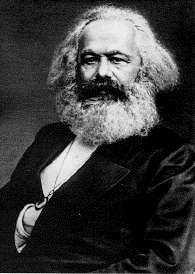 Karl Marx, Communist philosopher. Born May 5, 1818. Age 194.
Karl Marx, Communist philosopher. Born May 5, 1818. Age 194. Julia Ward Howe, writer of ‘The Battle Hymn of the Republic’ which was first published 1862. Born May 27, 1819. Age 193.
Julia Ward Howe, writer of ‘The Battle Hymn of the Republic’ which was first published 1862. Born May 27, 1819. Age 193.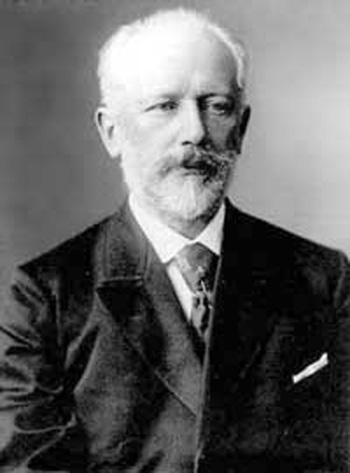 Peter Il’yich Tchaikovsky, Russian Composer. Born May 7, 1840. Age 172.
Peter Il’yich Tchaikovsky, Russian Composer. Born May 7, 1840. Age 172.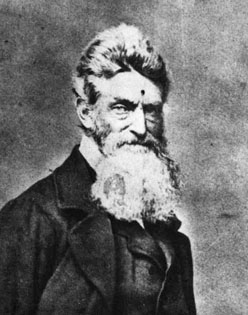 John Brown, abolitionist who led attack on Harper’s Ferry. Hanged in 1859. Born May, 9, 1800. Age 212.
John Brown, abolitionist who led attack on Harper’s Ferry. Hanged in 1859. Born May, 9, 1800. Age 212.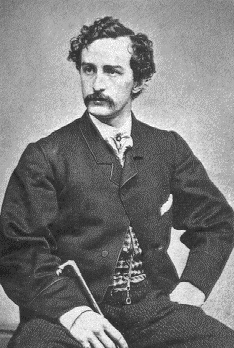 John Wilkes Booth, assassin of President Abraham Lincoln. He witnessed John Browns hanging in 1859. Born May 10, 1838. Age 174.
John Wilkes Booth, assassin of President Abraham Lincoln. He witnessed John Browns hanging in 1859. Born May 10, 1838. Age 174. Florence Nightingale, Italian nurse. May 12, 1820. Age 192.
Florence Nightingale, Italian nurse. May 12, 1820. Age 192.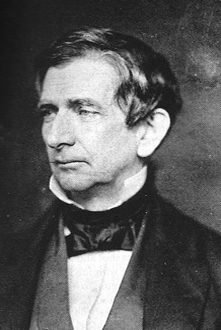 William Henry Seward, Secretary of State (1861-69). Born May 16, 1801. Age 211.
William Henry Seward, Secretary of State (1861-69). Born May 16, 1801. Age 211.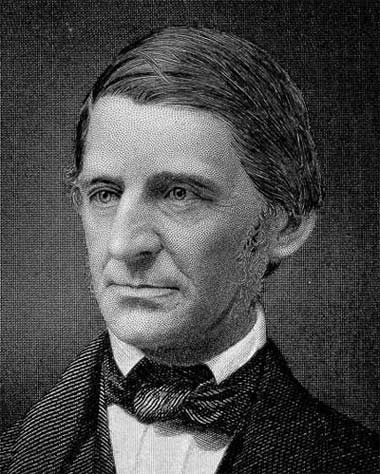 Ralph Waldo Emerson, US writer. Born May 25, 1803. Age 209.
Ralph Waldo Emerson, US writer. Born May 25, 1803. Age 209. James Butler ‘Wild Bill’ Hickok, American cowboy and scout. Born May 27, 1837. Age 175.
James Butler ‘Wild Bill’ Hickok, American cowboy and scout. Born May 27, 1837. Age 175. Walt Whitman, US Poet. Born May 31, 1819. Age 193.
Walt Whitman, US Poet. Born May 31, 1819. Age 193.

